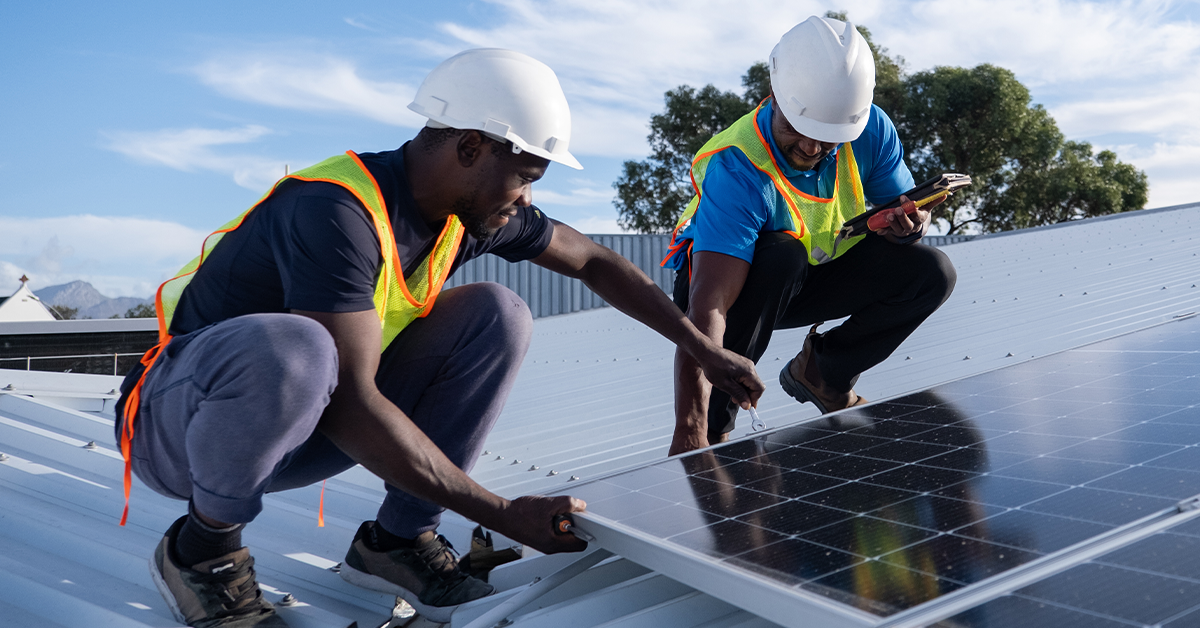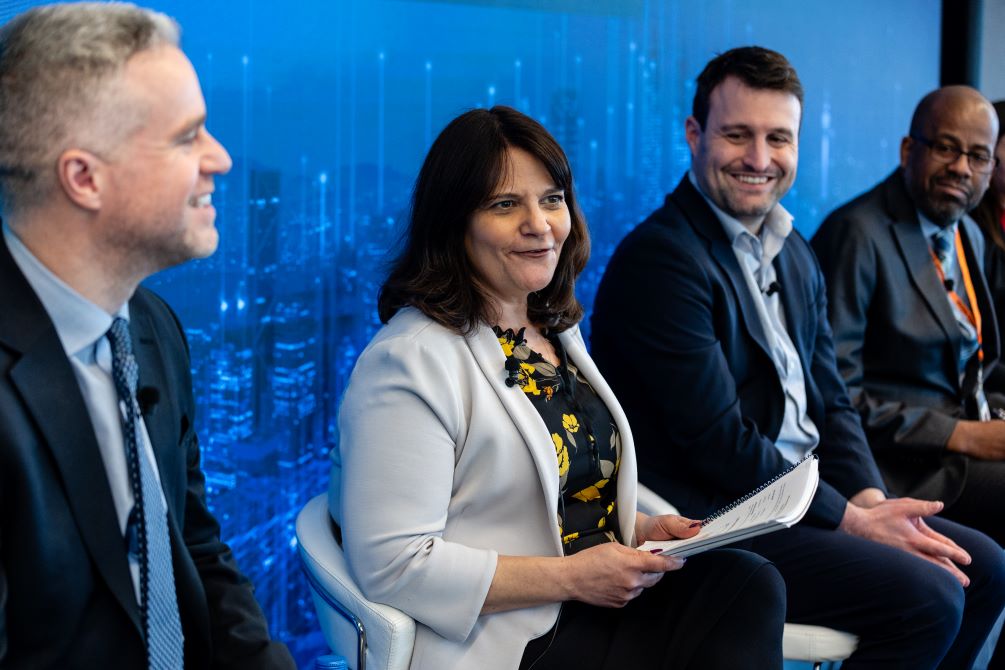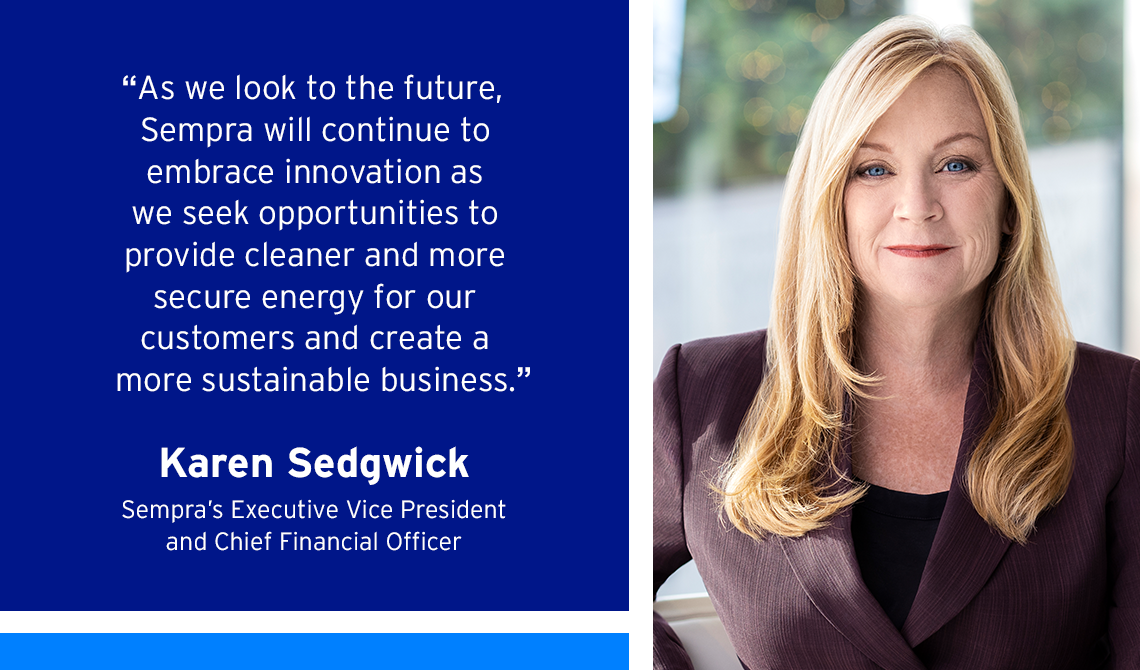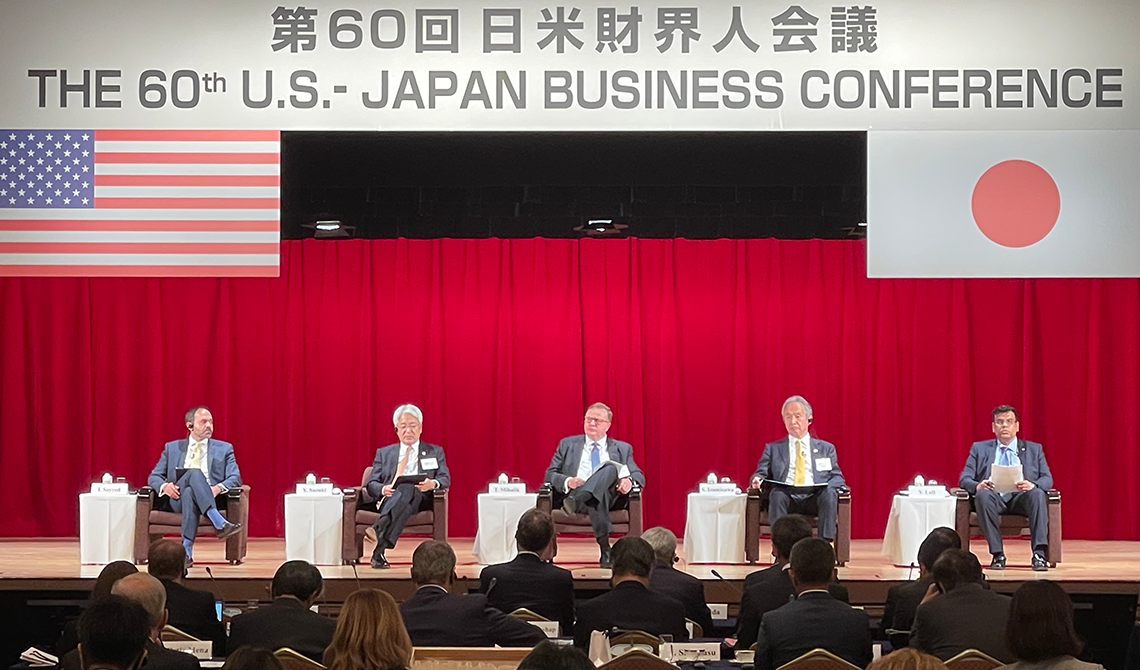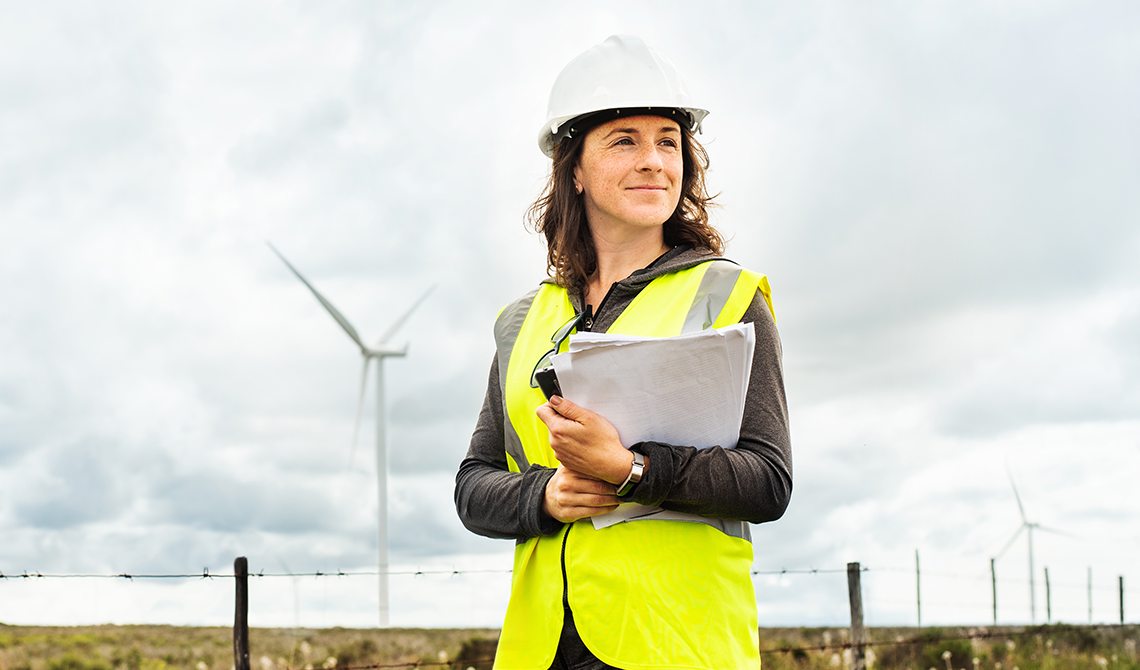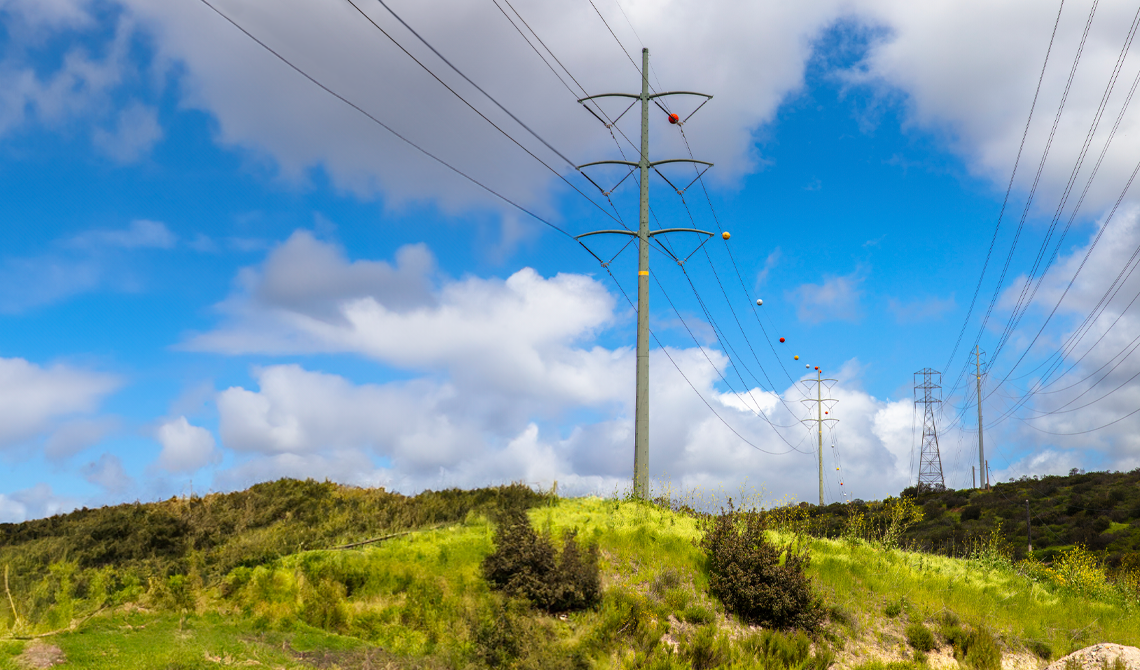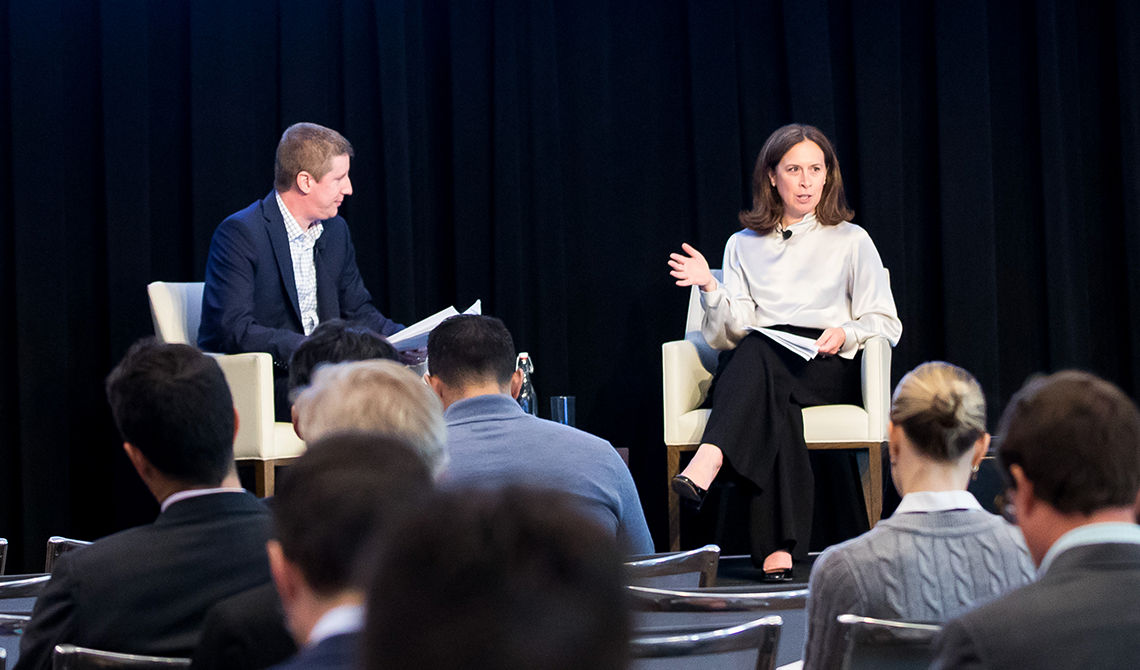According to a report by the California Energy Commission, California’s power demand could double in the next quarter century, requiring an even stronger, integrated gas and electric energy system. Sempra believes combining the strengths of clean electrons from solar, wind and hydro with the strengths of clean molecules like hydrogen and renewable natural gas, can deliver a more reliable and affordable clean energy future.
Today, Sempra subsidiary Southern California Gas Co. (SoCalGas) proposed what would be the largest green hydrogen energy infrastructure system in the United States, known as The Angeles Link.
The Angeles Link would be comprised of a new hydrogen-ready, interstate pipeline system capable of delivering green hydrogen into the Los Angeles basin. In doing so, The Angeles Link could drive deep decarbonization of dispatchable electric generation, hard-to-electrify industries and heavy-duty transportation in Los Angeles County, home to an estimated 10 million people and one of the largest industrial hubs in the nation. The proposed new hydrogen system has the potential to significantly decrease demand for natural gas and diesel fuels in the region, helping accelerate California’s climate and clean air goals.
Sempra California committed to innovation
“California is known for its leadership in technology and innovation and taking bold action to help solve some of society’s biggest challenges, so it is fitting that we are at the frontier of a potential new integrated energy system,” said Kevin Sagara, group president of Sempra. “Sempra’s California utilities are focused on innovation and building new integrated energy networks that provide customers with cleaner forms of electricity and industrial customers with a suite of lower-carbon tools to aid emissions reduction.”
Sempra has been intentional about updating its portfolio over the last several years to focus on the electrification of consumer markets, the expansion of energy networks and the global shift to cleaner power. A clean fuels network leveraging new and existing infrastructure can support customer choice as regions work to decarbonize and develop the means to scale up electrification.
“The needs of energy customers are changing,” said Sagara. “A dedicated hydrogen-ready pipeline system would have the potential to integrate more renewables on the electric grid, provide valuable storage and enhance reliability.”
Hydrogen’s role in a net-zero future
Green hydrogen has the potential to deliver significant emissions reductions in industries and sectors where renewable electricity alone cannot, such as certain industrial processes, building heating and transport. As the industrial sector transitions from carbon-based fuels like coal, natural gas and oil, to cleaner fuels, like renewable natural gas and hydrogen, both the electric grid and natural gas grid must become even more robust.
In its 2021 World Economic Outlook net-zero energy scenario, the International Energy Agency envisions that in 2050 more than 50% of global gas production will be used to produce low-carbon hydrogen. Dedicated pipeline and storage infrastructure, among other things, is needed to deliver this promising fuel of the future. IEA calls for governments to “ensure deployment of the infrastructure required to support longer term increases in low-carbon hydrogen supply and demand, including hydrogen pipelines, port facilities and storage.”
As the owner of one of the largest energy networks in North America, Sempra is working to expand grids and enable flexibility so zero-carbon electrons and molecules can work in tandem to meet our customers’ changing energy needs.
The proposed Angeles Link is in its initial stage of development, and subsequent stages will require regulatory review and discretionary approvals, among other things.
This article contains statements that constitute forward-looking statements within the meaning of the Private Securities Litigation Reform Act of 1995. Forward-looking statements are based on assumptions with respect to the future, involve risks and uncertainties, and are not guarantees. Future results may differ materially from those expressed in any forward-looking statements. These forward-looking statements represent our estimates and assumptions only as of the date of this article. We assume no obligation to update or revise any forward-looking statement as a result of new information, future events or other factors.
In this article, forward-looking statements can be identified by words such as “believes,” “expects,” “anticipates,” “plans,” “estimates,” “projects,” “forecasts,” “should,” “could,” “would,” “will,” “confident,” “may,” “can,” “potential,” “possible,” “proposed,” “in process,” “under construction,” “in development,” “target,” “outlook,” “maintain,” “continue,” “goal,” “aim,” “commit,” or similar expressions, or when we discuss our guidance, priorities, strategy, goals, vision, mission, opportunities, projections, intentions or expectations.
Factors, among others, that could cause actual results and events to differ materially from those described in any forward-looking statements include risks and uncertainties relating to: California wildfires, including the risks that we may be found liable for damages regardless of fault and that we may not be able to recover costs from insurance, the wildfire fund established by California Assembly Bill 1054 or in rates from customers; decisions, investigations, regulations, issuances or revocations of permits and other authorizations, renewals of franchises, and other actions by (i) the California Public Utilities Commission (CPUC), Comisión Reguladora de Energía, U.S. Department of Energy, U.S. Federal Energy Regulatory Commission, Public Utility Commission of Texas, and other regulatory and governmental bodies and (ii) states, counties, cities and other jurisdictions in the U.S., Mexico and other countries in which we do business; the success of business development efforts, construction projects and acquisitions and divestitures, including risks in (i) the ability to make a final investment decision, (ii) completing construction projects or other transactions on schedule and budget, (iii) the ability to realize anticipated benefits from any of these efforts if completed, and (iv) obtaining the consent or approval of partners or other third parties, including governmental entities; the resolution of civil and criminal litigation, regulatory inquiries, investigations and proceedings, and arbitrations, including those related to the natural gas leak at Southern California Gas Company’s (SoCalGas) Aliso Canyon natural gas storage facility; changes to laws, including proposed changes to the Mexican constitution that could materially limit access to the electric generation market and changes to Mexico’s trade rules that could materially limit our ability to import and export hydrocarbons; failure of foreign governments and state-owned entities to honor their contracts and commitments and property disputes; actions by credit rating agencies to downgrade our credit ratings or to place those ratings on negative outlook and our ability to borrow on favorable terms and meet our substantial debt service obligations; the impact of energy and climate goals, policies, legislation and rulemaking, including actions to reduce or eliminate reliance on natural gas generally and any deterioration of or increased uncertainty in the political or regulatory environment for California natural gas distribution companies; the pace of the development and adoption of new technologies in the energy sector, including those designed to support governmental and private party energy and climate goals, and our ability to timely and economically incorporate them into our business; weather, natural disasters, pandemics, accidents, equipment failures, explosions, acts of terrorism, information system outages or other events that disrupt our operations, damage our facilities and systems, cause the release of harmful materials, cause fires or subject us to liability for property damage or personal injuries, fines and penalties, some of which may not be covered by insurance, may be disputed by insurers or may otherwise not be recoverable through regulatory mechanisms or may impact our ability to obtain satisfactory levels of affordable insurance; the availability of electric power and natural gas and natural gas storage capacity, including disruptions caused by failures in the transmission grid or limitations on the withdrawal of natural gas from storage facilities; the impact of the COVID-19 pandemic, including potential vaccination mandates, on capital projects, regulatory approvals and the execution of our operations; cybersecurity threats to the energy grid, storage and pipeline infrastructure, information and systems used to operate our businesses, and confidentiality of our proprietary information and personal information of our customers and employees, including ransomware attacks on our systems and the systems of third-party vendors and other parties with which we conduct business; the impact at San Diego Gas & Electric Company (SDG&E) on competitive customer rates and reliability due to the growth in distributed and local power generation, including from departing retail load resulting from customers transferring to Direct Access and Community Choice Aggregation, and the risk of nonrecovery for stranded assets and contractual obligations; Oncor Electric Delivery Company LLC’s (Oncor) ability to eliminate or reduce its quarterly dividends due to regulatory and governance requirements and commitments, including by actions of Oncor’s independent directors or a minority member director; volatility in foreign currency exchange, inflation and interest rates and commodity prices and our ability to effectively hedge these risks and with respect to interest rates, the impact on SDG&E’s and SoCalGas’ cost of capital; changes in tax and trade policies, laws and regulations, including tariffs and revisions to international trade agreements that may increase our costs, reduce our competitiveness, or impair our ability to resolve trade disputes; and other uncertainties, some of which may be difficult to predict and are beyond our control.
These risks and uncertainties are further discussed in the reports that Sempra has filed with the U.S. Securities and Exchange Commission (SEC). These reports are available through the EDGAR system free-of-charge on the SEC's website, www.sec.gov, and on Sempra’s website, www.sempra.com. Investors should not rely unduly on any forward-looking statements.
Sempra Infrastructure, Sempra LNG, Sempra Mexico, Sempra Texas Utilities, Oncor and Infraestructura Energética Nova, S.A.P.I. de C.V. (IEnova) are not the same companies as the California utilities, SDG&E or SoCalGas, and Sempra Infrastructure, Sempra LNG, Sempra Mexico, Sempra Texas Utilities, Oncor and IEnova are not regulated by the CPUC.


